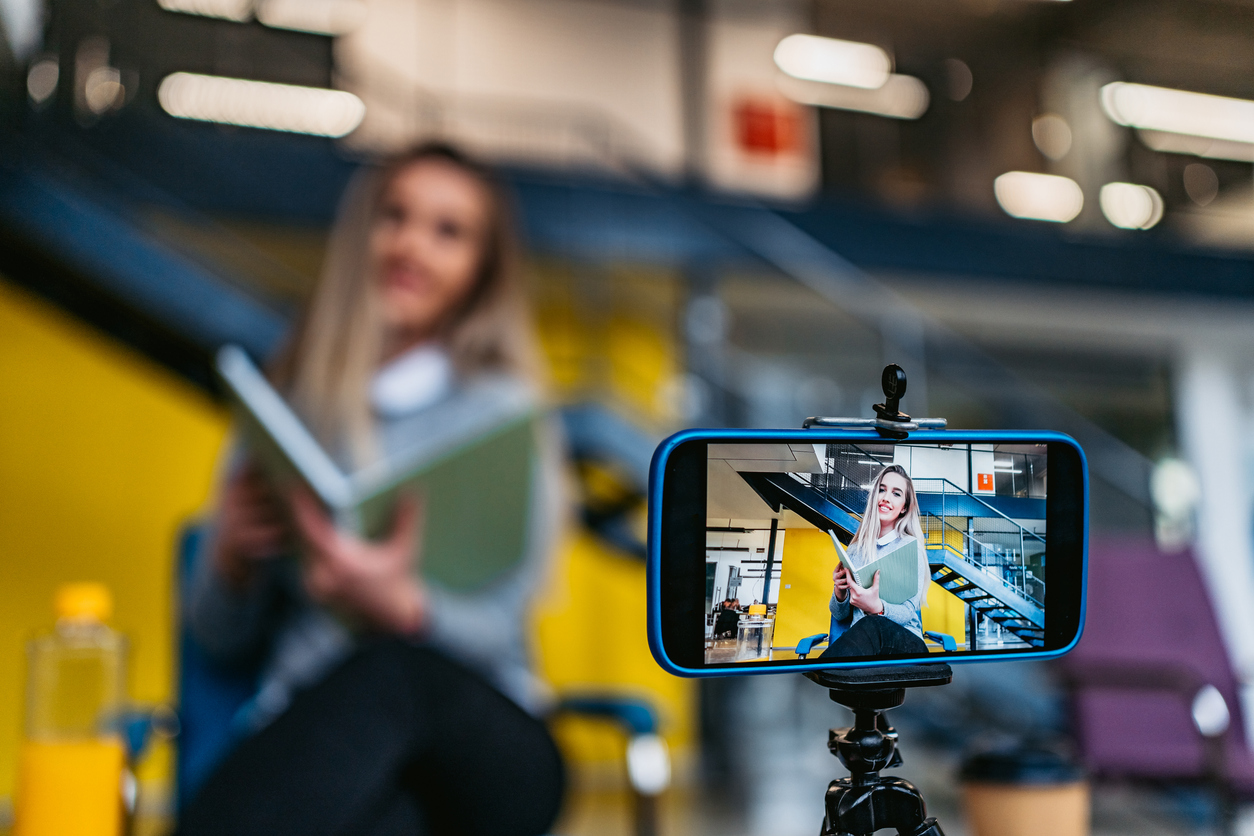It’s time to get digital. Virtual channels have long overtaken their physical counterparts in student recruitment, with students engaging more than ever on social media, your website, and other related channels. Creating a comprehensive digital strategy in higher ed becomes vital in that environment. Instead of every channel representing your institution in isolation, they have to work together to create a larger ecosystem for prospective students to engage with.
That process takes time, but it’s far from impossible. Also, here’s the good news: now is the perfect time to start building your higher ed digital strategy. Planning and building it out in late spring and early summer will allow you to implement it with plenty of time to spare for the 2023-24 enrollment cycle.
If you’re an admissions marketer looking to boost application inquiries, discover the game-changing impact of interactive campus maps in our blog post, ‘Interactive Campus Maps: A Powerful Admissions Tool‘.
So let’s get things started. Follow these steps for a comprehensive digital strategy in higher ed designed to attract, engage, and enroll students that match your target profile.
6 Steps to Build Your Digital Strategy in Higher Ed
1. Streamline Your Website Experience
We’ll start with what should be the hub of your higher ed digital strategy: your website. Studies consistently show that it’s among the biggest tools your audience uses to search for potential colleges. It’s also the most important platform you have direct control over.
Unfortunately, most current higher ed websites are not set up for the responsibility that this importance brings with it in recruitment. The average university website has thousands of pages, many completely irrelevant to prospective students just looking for information like net price, academics, and visit dates.
As a result, more than half of all high school students in a recent survey said that searching a college or university website returned outdated or irrelevant results.
And that’s before we even get to accessibility, which continues to be a struggle with college websites. The lack of accessibility can create significant barriers for students with disabilities, hindering your recruitment efforts and introducing the potential for legal issues.
The first key is to streamline your website experience. A cleaner and more visual design, fewer pages, and more intuitive navigation can go a long way toward improving your digital strategy in higher ed. So does building the foundations for digital accessibility—not just on your website but on all owned digital properties.
2. Reinvent Your Social Media Strategy
Chances are that your higher ed digital strategy already includes at least some form of social media. That makes sense, considering the fact that teenagers now spend more than four hours per day on social media. For context, that’s more time than they spend browsing the web.
But unfortunately, simply being on social media is no longer enough—even if your university accounts boast thousands of followers. The average social media post now reaches around 5% of those followers.
The takeaway: managing social media on your own, and using it as a purely promotional outlet, is no longer enough. Instead, Gen Z is looking for more authentic content. That more authentic content requires involving your students in the execution of your digital strategy in higher ed.
Start by forming a student ambassador program. If you already have one, start involving it in your social media content creation. Allow that team considerable freedom (with some oversight, of course) to create social media content, especially video and photos, for your institution.
You can also find other ways to have students create content on your behalf. For example, student takeovers, social media contests, and other tactics can all help you use social media to boost your admissions. The result will be a better, more authentic social presence that your prospective students become more likely to enjoy and engage with.
3. Provide Immersive Virtual Campus Experiences
Make no mistake: virtual tours have been around (and have been successful) for higher education institutions for a long time. But few technologies rose as rapidly in popularity when COVID-19 hit, and that popularity is unlikely to go away anytime soon.
The reason is simple. Campus visits are both incredibly important for deciding what college to attend and increasingly expensive. Many students, especially those from lower income brackets, will need to have a good idea of what to expect before making that financial commitment. That’s where the right virtual campus experience can shine.
A virtual tour is by no means a replacement for the full, physical campus tour. But it does allow you to provide insights into what life and academics on campus are like to students and parents who are just learning more about you. The fact that you can make these experiences immersive through virtual reality and supplemental visuals only adds to that equation.
Best of all, a virtual tour is a piece of content that can connect to multiple tactics within your digital strategy in higher ed. It embeds into your website and can be linked to in calendars or social posts.
4. Connect the Physical and Digital Experience
No college prospect journey is entirely virtual. Even students who want to test the waters first eventually come on campus for an open house, admitted student day, or orientation. At this point, your digital strategy in higher ed has to line up with those physical experiences.
Getting to that point requires a lot. But no piece may be more essential than the digital campus map. You can use it for wayfinding, helping students with move-in, and more.
However, a well-designed interactive campus map can go far beyond these essentials. It allows you to showcase construction areas on campus as what your university will be for future students, show shuttle traffic through live data feeds, and more.
And, of course, the map also integrates with your digital presence. It lives on your website, but individual pieces and even directions can embed directly into your emails and other digital properties.
That’s how you connect your physical and virtual campus for future students. It’s also how you make sure that their student journey is as smooth as possible. They’ll always know where to go and what to do while getting a fuller picture of what the school they’ll attend will be like.
5. Use Your Event Calendar as a Recruitment Tool
Much like your campus map, your website’s event calendar may seem like a purely functional tool at first glance. While it is that, it can also have the potential for so much more in the right hands.
Your students want to attend your school to get their degrees. But while they obtain that degree, they also want to have fun. Student organization meetings, campus events, and concerts or shows by local and national talent matter nearly as much as their class times.
Of course, they have to know that those events exist first. A well-organized, accurate, and comprehensive event calendar shows both prospective and current students what’s going on around campus, giving them a taste of life as a student at your school.
To get there, you have to prioritize your calendar in your higher ed digital strategy. Work with organizers, including student groups, to add their events. The easier it is for them to add events and distribute them across digital channels, the better.
6. Build Advertising Campaigns to Complement Your Content

Finally, no digital strategy in higher ed is complete without paid advertising. But how you structure those ads, and the tactics you use to engage and convert future students, matters as much as the budget you have to spend on them.
The right approach is key. Few students respond to the tenth university showing a few students smiling under a tree. Your paid content has to be as creative as your organic content to get their attention and convert that attention into inquiries and applications for your school.
That said, getting to this point is actually easier than you might think if you’ve already followed the above steps. That’s because all of them can flow directly into your digital advertising strategy:
- Build engaging, UX-optimized landing pages on your website for each of your digital ads.
- Create ads through similar processes, and with similar student inputs, as your organic content on those social media channels.
- Use your virtual tour, interactive campus map, and calendar events as content for individual ad campaigns.
Think about it: would prospective students rather see another promise that student life will be fun or a visual and real example of how fun it would be at a concert on campus? The answer is clear. Through that lens, you can build more engaging and conversion-optimized digital advertising campaigns.
The Time to Optimize Your Digital Strategy in Higher Ed Is Now
In an age of higher education parity and competition, standing out from the crowd is key. The above steps can help you get there, but they require both time and effort.
That’s why starting your efforts to optimize and reinvent your digital strategy in higher ed now is so important. With the 2022-23 recruitment cycle coming to an end, planning for the next class cannot come soon enough.
If that planning includes implementing or optimizing your virtual tour, campus map, or event calendar, we’re here to help. Our education experience has enabled us to be a core strategic partner for countless institutions. If you’re ready to add yours to the list and start optimizing your higher ed digital strategy, contact us.

